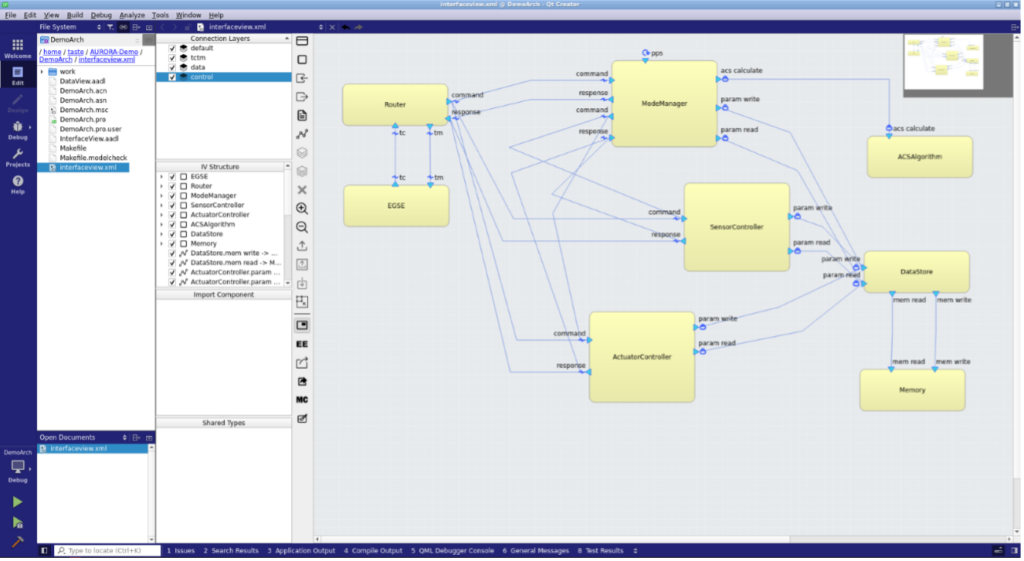The TASTE model-based tool chain, developed by ESA, was selected as the basis for CBI (Component-Based Interface) implementation. The requirements were consolidated by Universidad Politécnica de Madrid (UPM) and implemented by N7 Space. The SpaceCreator IDE (Integrated Development Environment), serving as the main graphical interface of TASTE, was extended with multiple additions:
- Function Tester Plugin, facilitating the execution of data-driven component tests.
- Simulink Importer Plugin, simplifying the integration of Simulink models as components.
- Multicast support, enabling the incorporation of publisher-subscriber patterns.
- Layer support, improving system architecture readability.
- Archetype support, providing framework for interface standardization.
The changes to the IDE were supplemented by relevant modifications of the rest of the tool chain, including the Kazoo template processor and the DMT (Data Modelling Tools) code generator. The integration of the QGen code generator was redesigned and re-tested. It was also improved by adding the support for vector IO optimizations and S-Functions.
In order to enable the deployment of the designed systems to the LEON3FT GR712RC high-reliability processor, a new TASTE runtime was developed using the ESA customized, pre-qualified version of the RTEMS operating system. Its implementation was accompanied by improvements to the SIS simple instruction simulator, enabling testing of the runtime without the need of any hardware.
The developed software was validated against the requirements via a set of tests, example models, analyses, and inspections. Full requirement coverage was achieved.
Software deliverables of the activity are integrated with the main TASTE repository https://gitrepos.estec.esa.int/taste/taste-setup, and available to the public.

